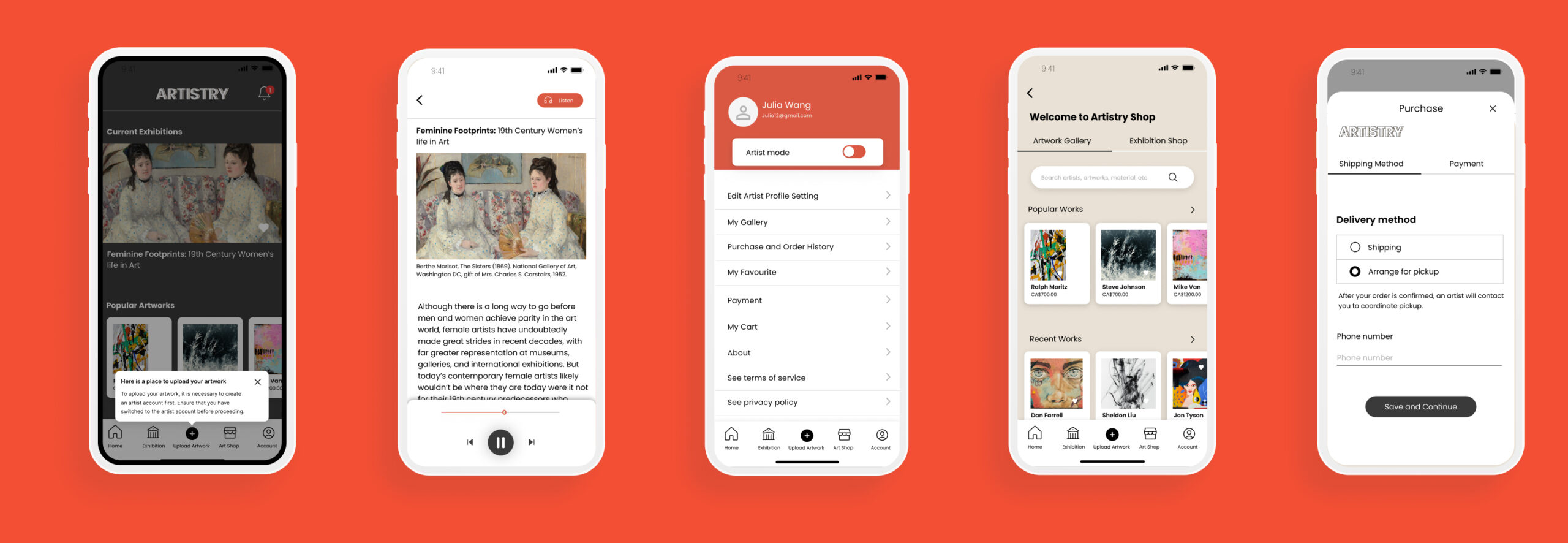
Overview
People who live far from the city have difficulty enjoying cultural experiences such as art exhibitions. This geographical problem also affects artists, as they struggle to promote their work through exhibitions and selling them. This app could help both target audiences through virtual exhibitions and an online sales function via the local matching service. For these reasons, this is a double-sided app that can be used by both general users and artists.
My Role: Sole UX/UI designer
Target Audience: Local citizens & artists who want to enjoy exhibitions & sell their works throughout the city.
Duration: 4 weeks
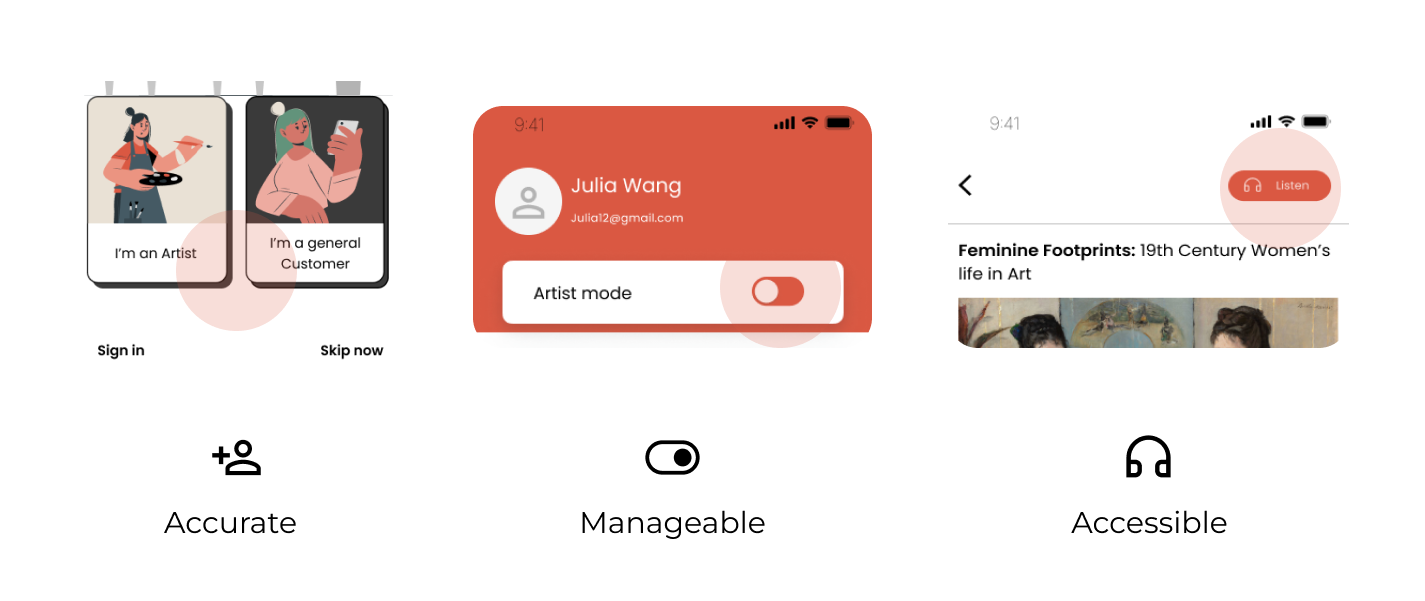
01 Define
Problem Statements
- People who want to enjoy cultural experiences face challenges attending in person because most exhibitions are held in major cities like Toronto, Vancouver, and Ottawa in Canada
- Local artists in Canada also have difficulties introducing their exhibitions and selling their works in major cities and throughout the country due to the long distances
How might we?
How might we allow users to enjoy virtual local artist exhibitions on our platform and give artists the opportunity to sell their artworks and promote their exhibitions at the same time?
Research
I researched to gather information about users’ situations. I conducted both desk research and artist interviews. Through my research, I founded some meaningful insights for the potential users.
- I discovered that over 90% of artists prefer to utilize online platforms that showcase and selling their artwork. Despite the existence of numerous mobile platform services, they feel that these platforms are not effectively meeting their needs for some reasons.
- Many Canadians prefer to utilize digital platforms for cultural life instead of visiting in-person due to various factors such as time, cost and accessibility. Especially, for Canadians living on the outskirts of the city, the digital platform is the only channel available and easy to them.
Desk Research
I conducted desk research to find out the number of visitors to art museums, how often they visit, and the reasons for their visits.
Accessibility & Proximity
The location and accessibility of museums can be a barrier for some Canadians, especially those living in rural or remote areas. Lack of transportation or the high cost of travel can also be factors that prevent frequent visits
Cost
Admission fees and associated costs such as parking and transportation can be a deterrent for some Canadians, particularly if they have tight budgets or prioritize spending their leisure time and money on other activities
Digital Alternatives
With advancements in technology, people now have access to a wide range of digital content and virtual experiences. Some Canadians may choose to explore museums through online platforms, virtual tours, or digital exhibitions
Artist Interview
I conducted in-person interviews with 12 artists who participated in the Toronto Art Fair in 2022. Most of the artists said that they struggle with financing and selling their artworks.” And they wanted to use an online platform for selling their artworks. However, 40% of the artists said other online art selling platforms don’t work well for some reasons.

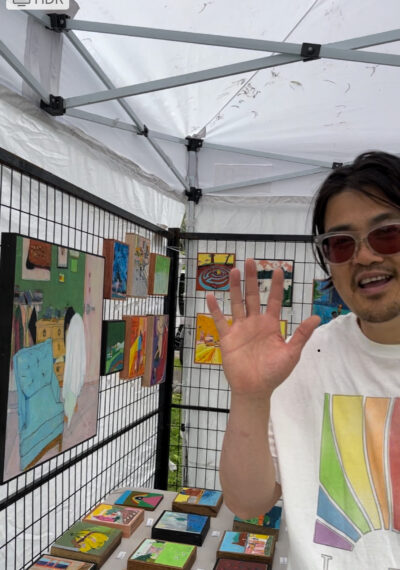

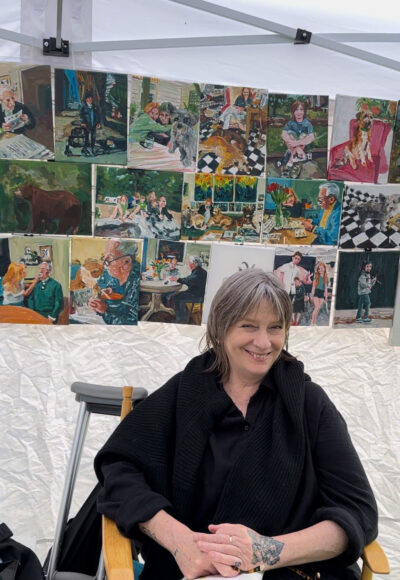
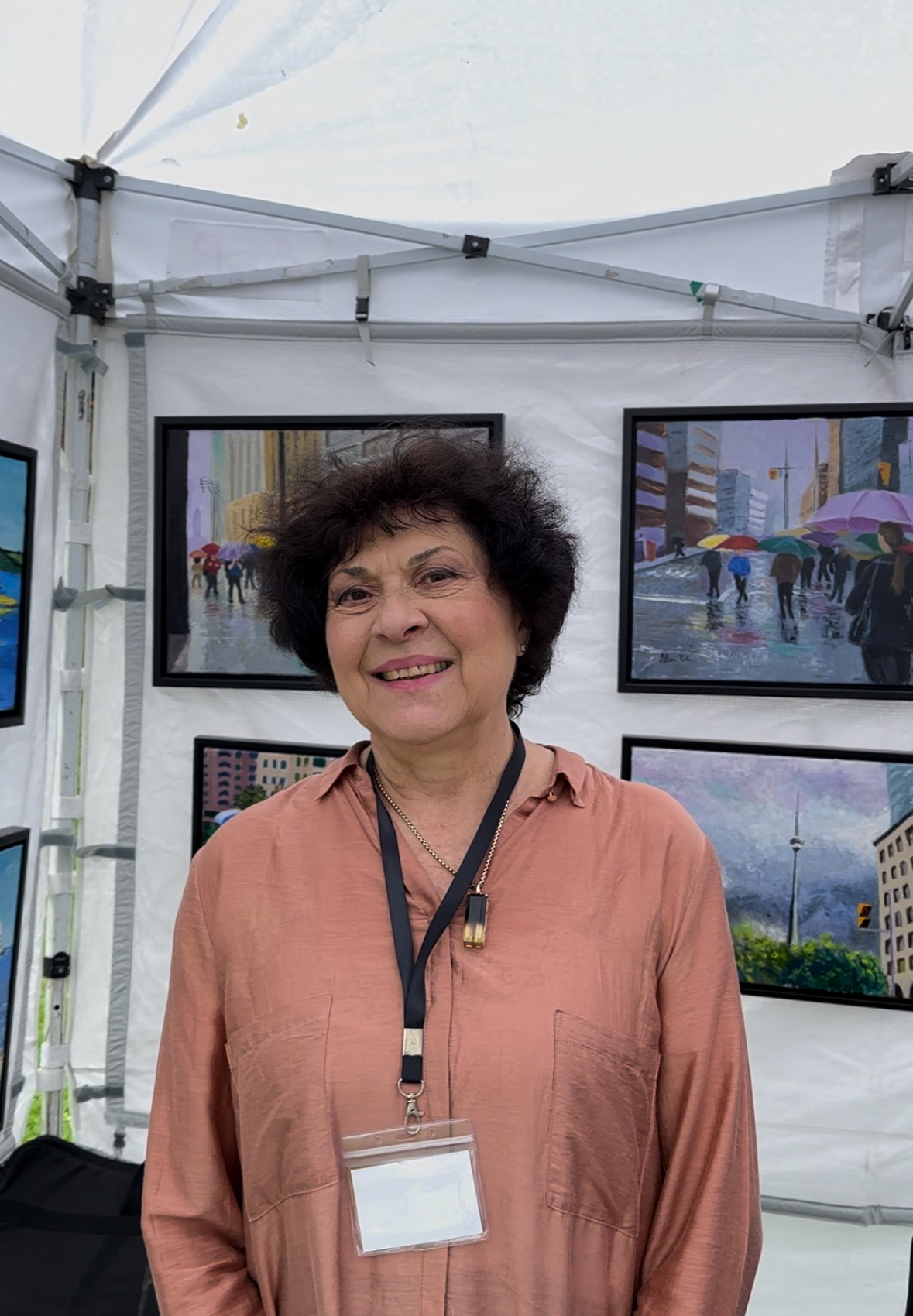
1. Have you recently sold any of your artworks? If so, how did you do it?
2. Do you think are you in need of an online platform to sell your artworks?
3. Do you have any reasons for not using an app to sell your artworks?
Field Research (Competitive Analysis)
In my investigation of art-selling applications and online art exhibition platforms, I discovered a common deficiency in both: they lack sufficient features that enable active user participation and interaction. As we know, the success of a product heavily relies on its ability to engage users through meaningful interactions.
Selling Art Online

Online Art Exhibition

Hypotheses
Research allowed me to define the exact target audience and assumptions about the solution. The target audience would be broad, including artists who want to sell their works and Canadians interested in collecting artworks and enjoying art culture. In this phase, I formulated hypotheses from the data and developed some solutions.
- What if we offered a feature for uploading artwork photos and showcasing them on their account and art shop page
- What if we offered a virtual art history exhibition for Canadians interested in cultural life?
- What if we provided services to both general users and artists to enjoy exhibitions and display their artworks?
02 Empathize
Persona
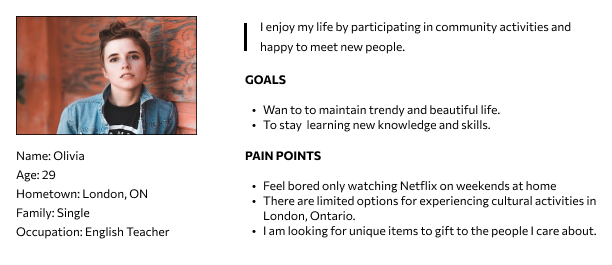
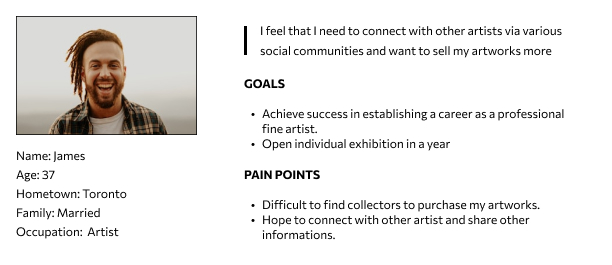
User Journey map

Information Architecture
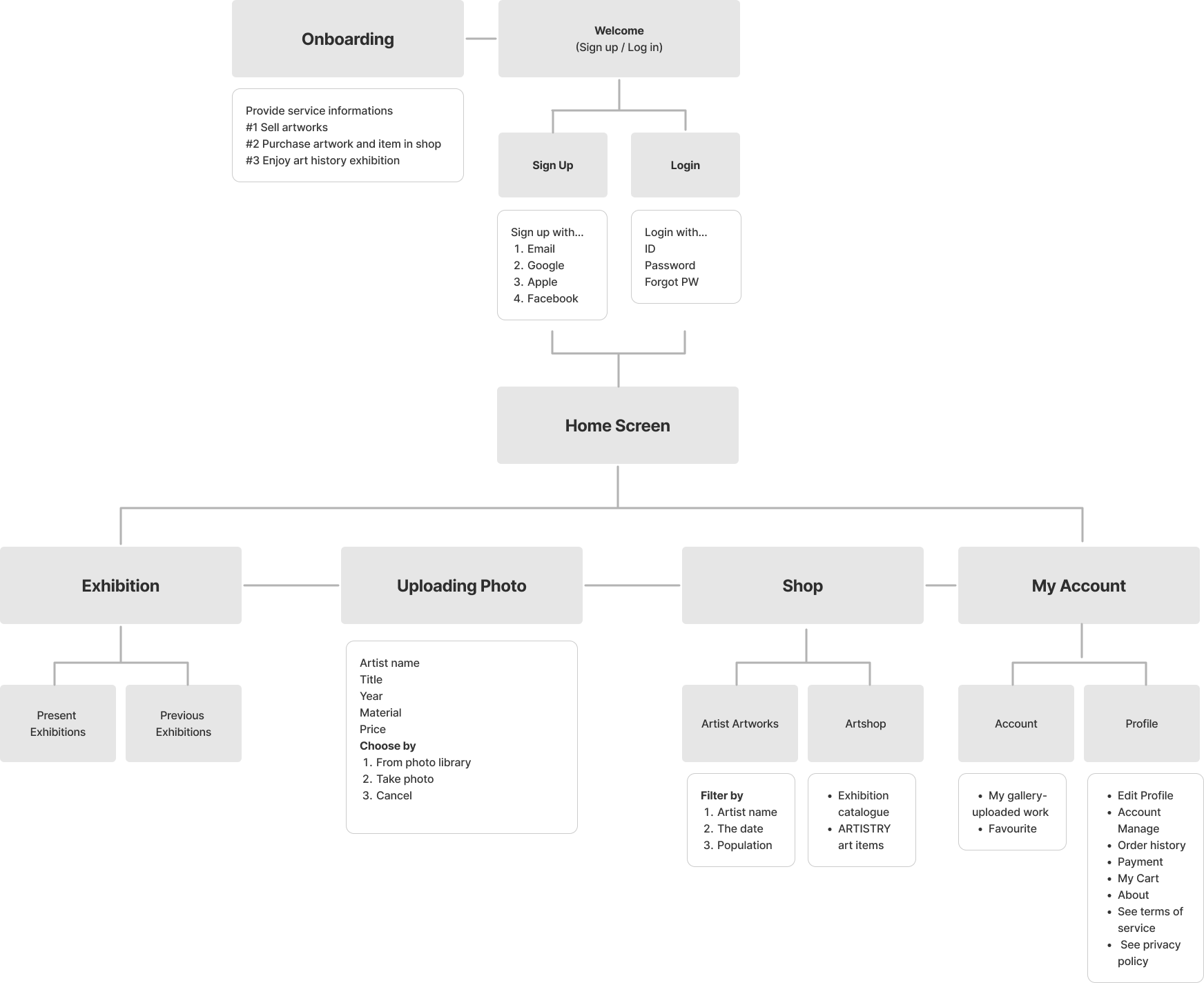
03 Ideate
Wireframe & Usability test
After creating a wireframe, I conducted Usability Test and Design Iterations. I weas able to reiterate the design and come up with improved functional ideas by reflecting the user feedback obtained through the testing process.
1) 1st Round : Moderated usability test with lo-fi prototype
- Goal : To figure out if users can complete the core tasks(purchase artworks. upload artwork photo and enjoy exhibition) within the app
- KPI : Time on task, User error rates
2) 2nd Round : Unmoderated usability test with hi-fi prototype
- Goal : To understand which parts of the design are frustrating users within the app
- KPI : Time on task, User abandon rates
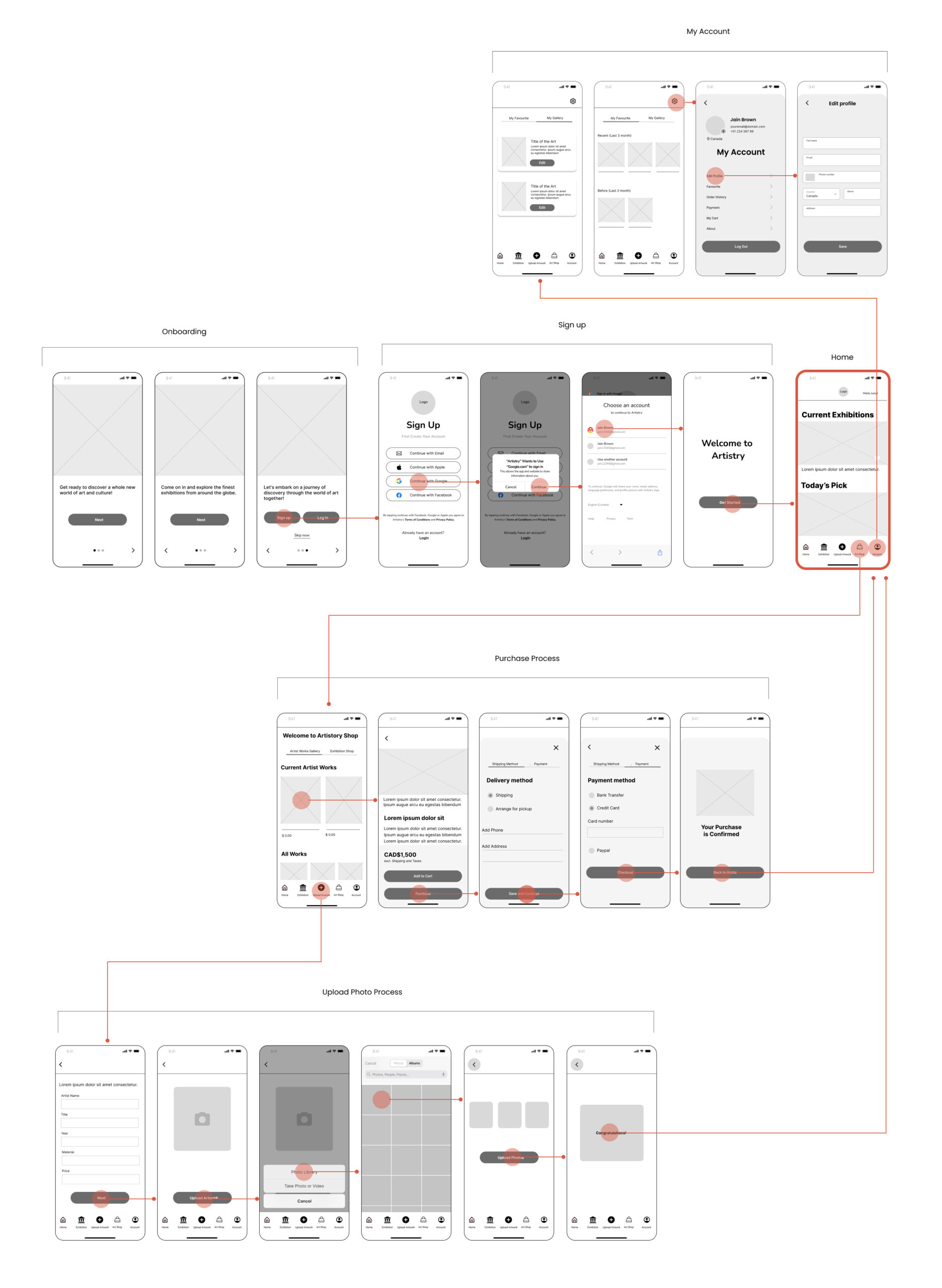
Before & After
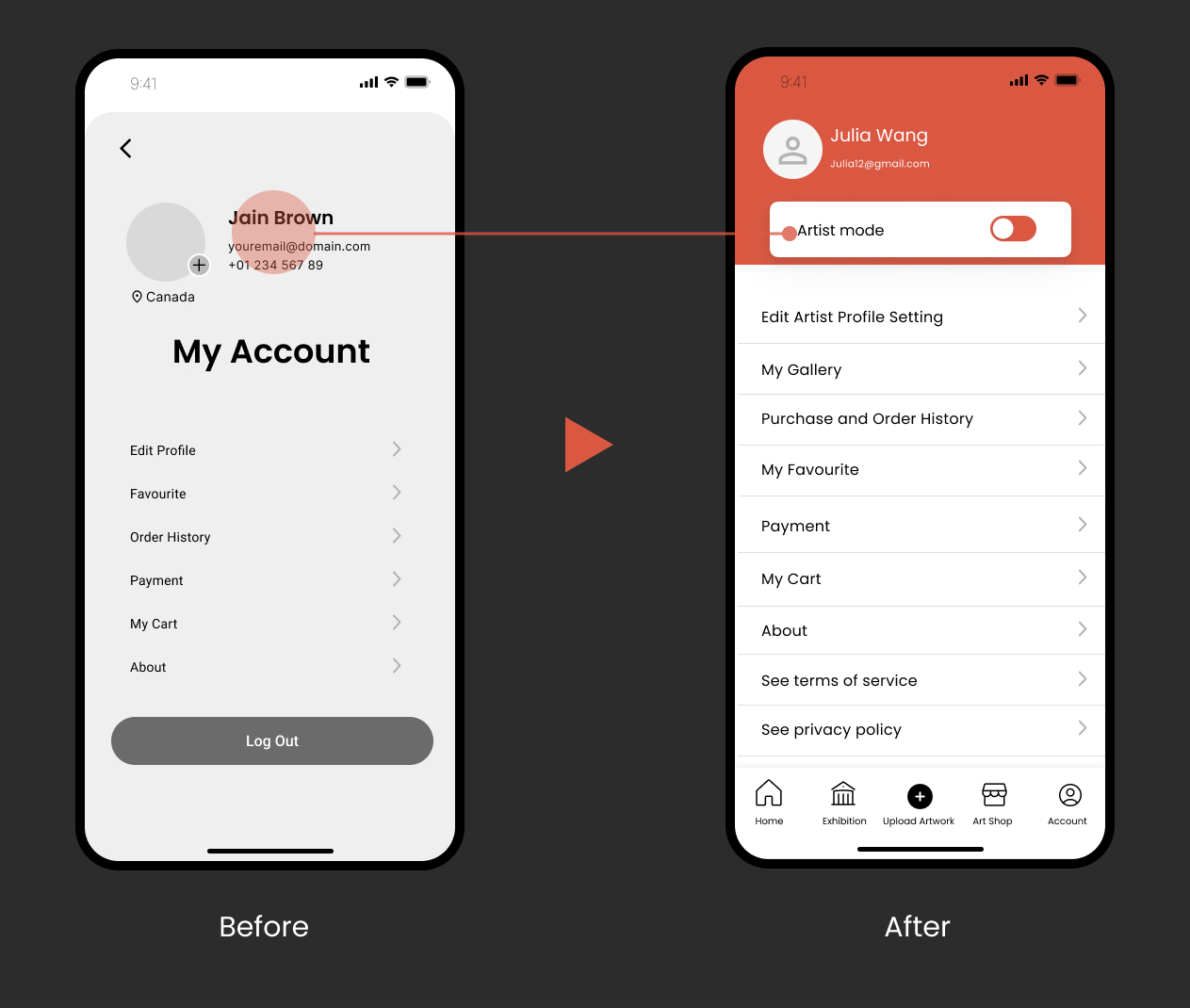
1. Users wanted to switch their account from the artist side to the general user side freely.
- Originally, users could choose their account type as either an artist or a general user. However, some participants expressed the desire to switch accounts at their convenience
- To address this, I added a switch toggle button in the account section, allowing users to freely switch between artist and general user accounts in the artistry app without limitations
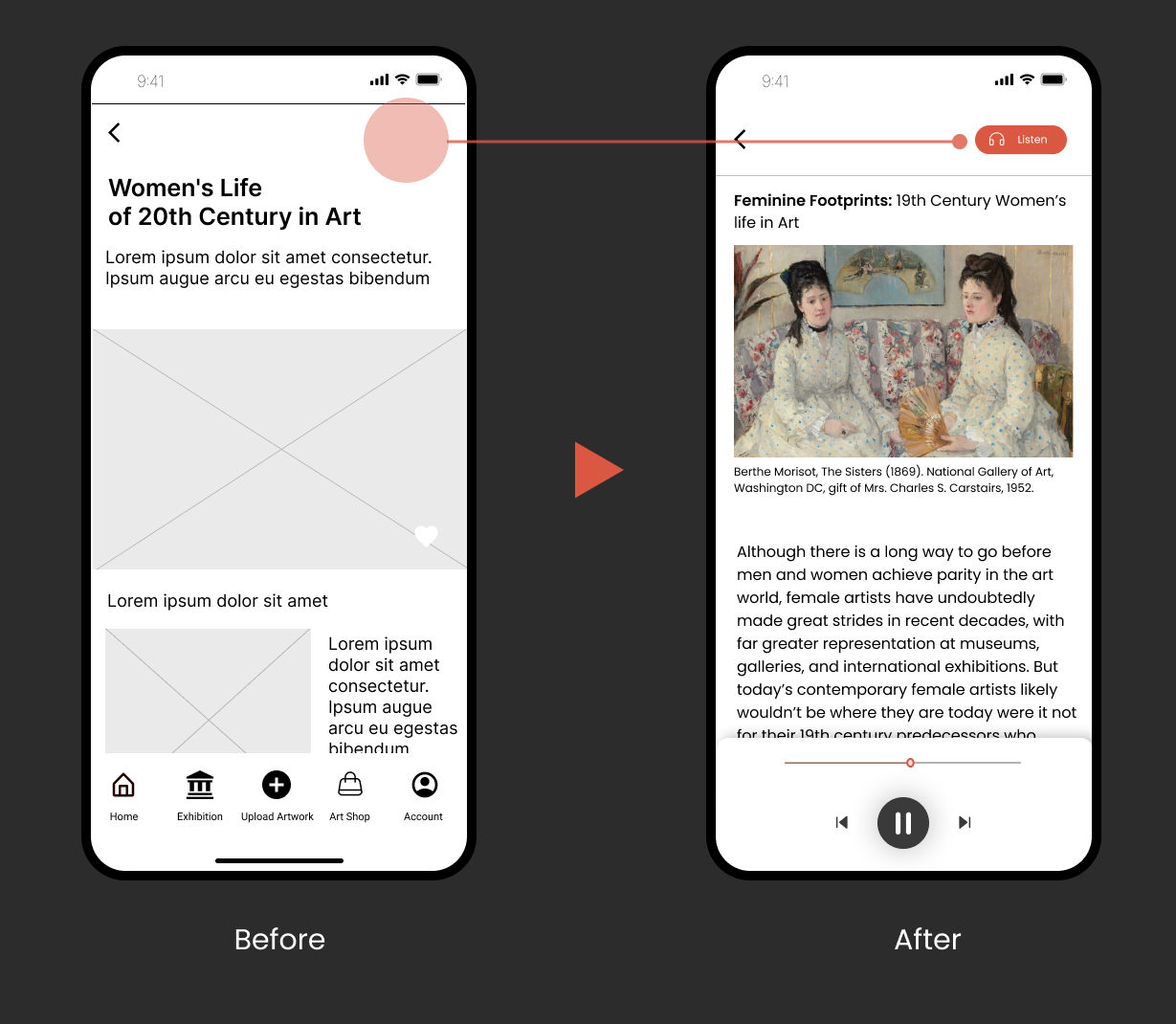
2. Users didn’t enjoy heavy-text content.
- After observing users, it was noted that they often skipped text-heavy areas on the screen compared to image contents
- Based on feedback, I added a listening content function with a listening button, allowing users to choose a way to appreciate the art-history exhibition

3. Users didn’t know how to upload artwork.
- Most participants took time to find a button that could upload their photos when they decided to display their artworks
- To address this, I added a tooltip to the home screen to encourage users to enjoy the app, providing more precise information on uploading
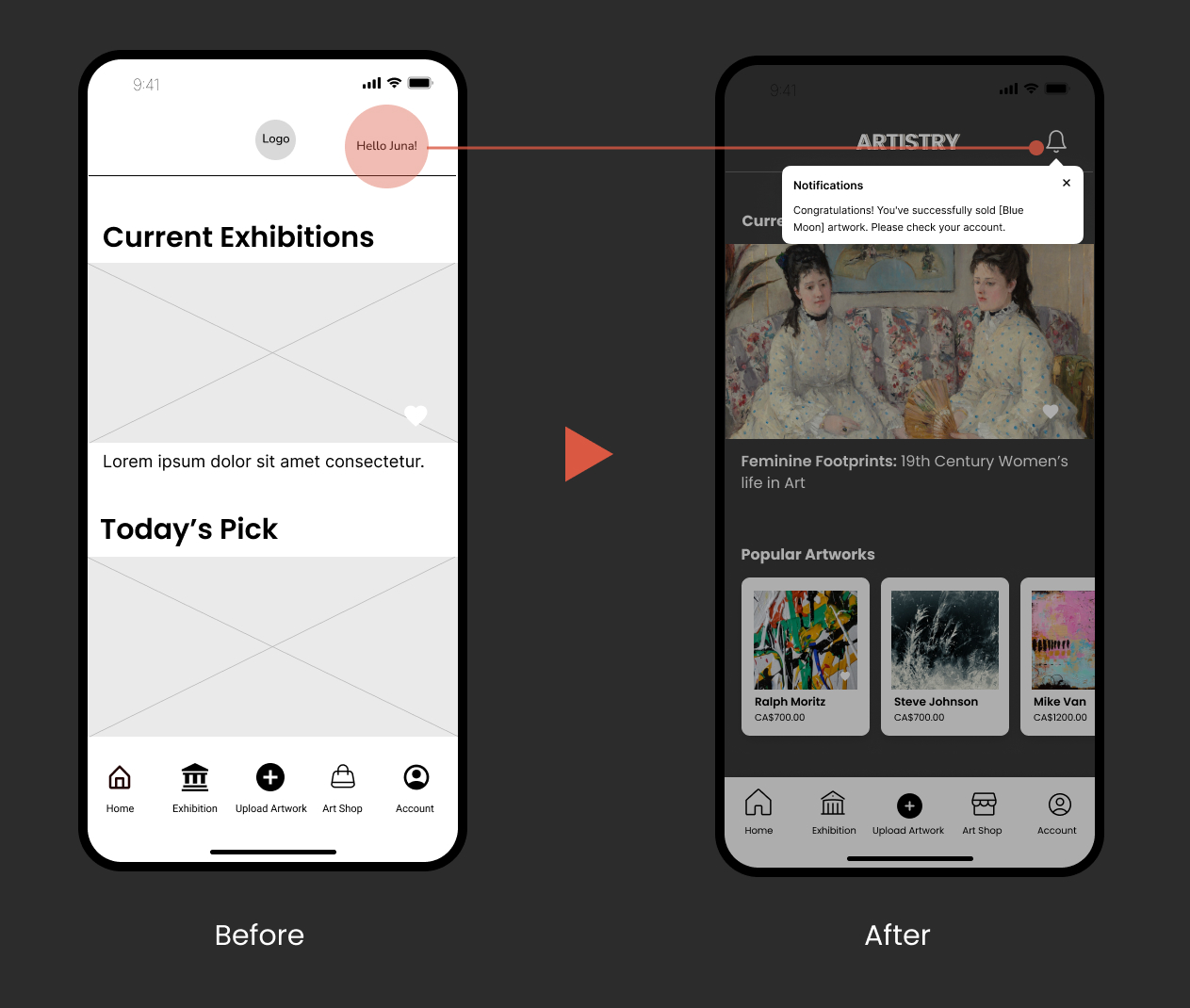
4. Users are confused about whether their purchase has succeeded or not.
- participants took time to find a result their purchasing
- To address this, I added a notification at the top right. This can help users confirm their purchase and check it right away
04 Design
Style Guide
The branding of the Artistry app focused on maintaining a consistent look and accessibility. To achieve this, we checked the Color Contrast Accessibility Validator scores to pay attention to readability for users.
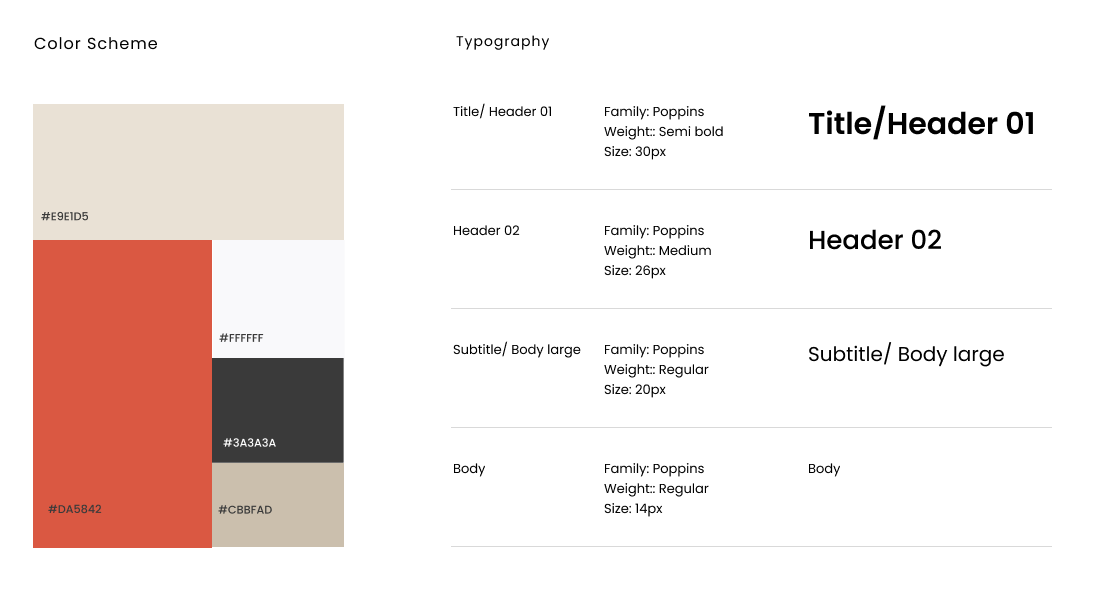
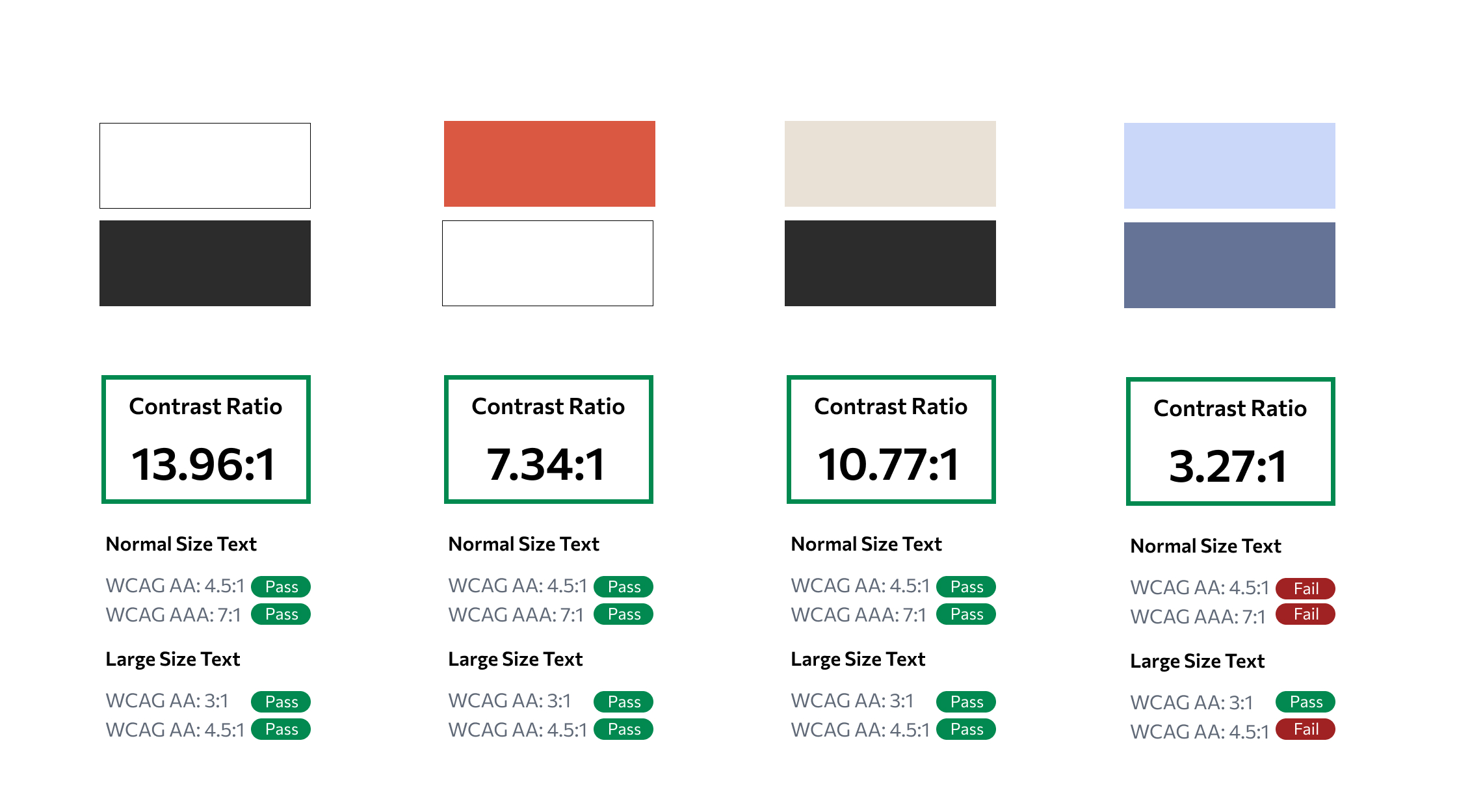
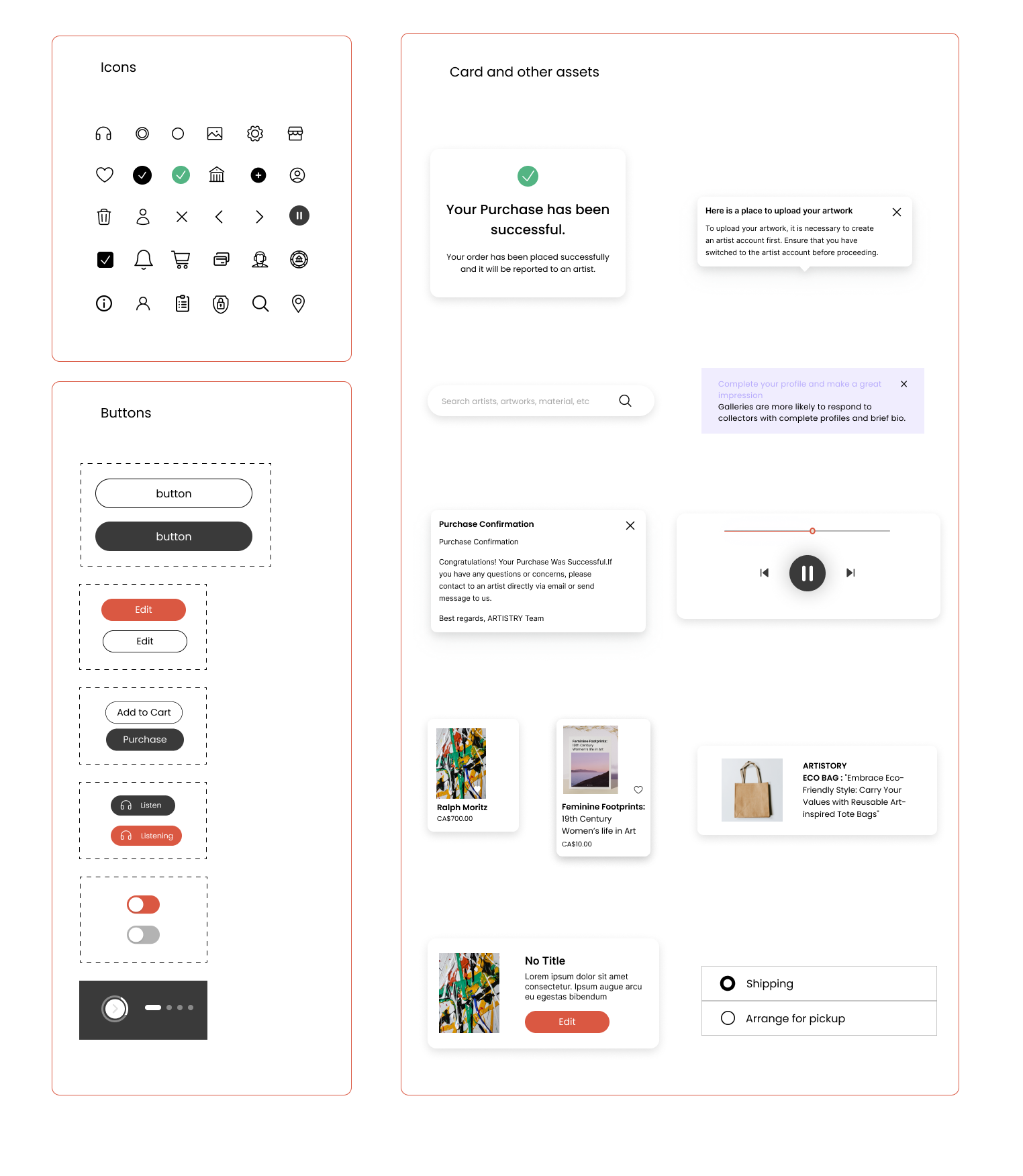
Choosing an account feature among artists and general users in the onboarding process.
Listening feature in a virtual exhibition for users who dislike heavy text
User profile page with a toggle button to switch from general user to pro artist.
Payment process and getting notification.
05 Reflection
What I Learned & Next Step
Through the Artistry project, which targeted both artists and the general public, I gained valuable experience working on a multi-sided project. I had to consider how to enable the transition from a general user to a professional artist right from the registration stage. Through research, I came to fully realize the need for an app that allows users to find art exhibitions anywhere, and I gained a deeper understanding of what users want during the exhibition process.
As I was finishing this mobile app, I began to think about the next steps. In the case of virtual art exhibitions, I realized that mobile devices fall short in terms of visual presentation. I concluded that a web-based service would be more advantageous than a mobile one for this type of visual entertainment. If I were to move forward with this project, I believe creating a web app would be the better approach.

